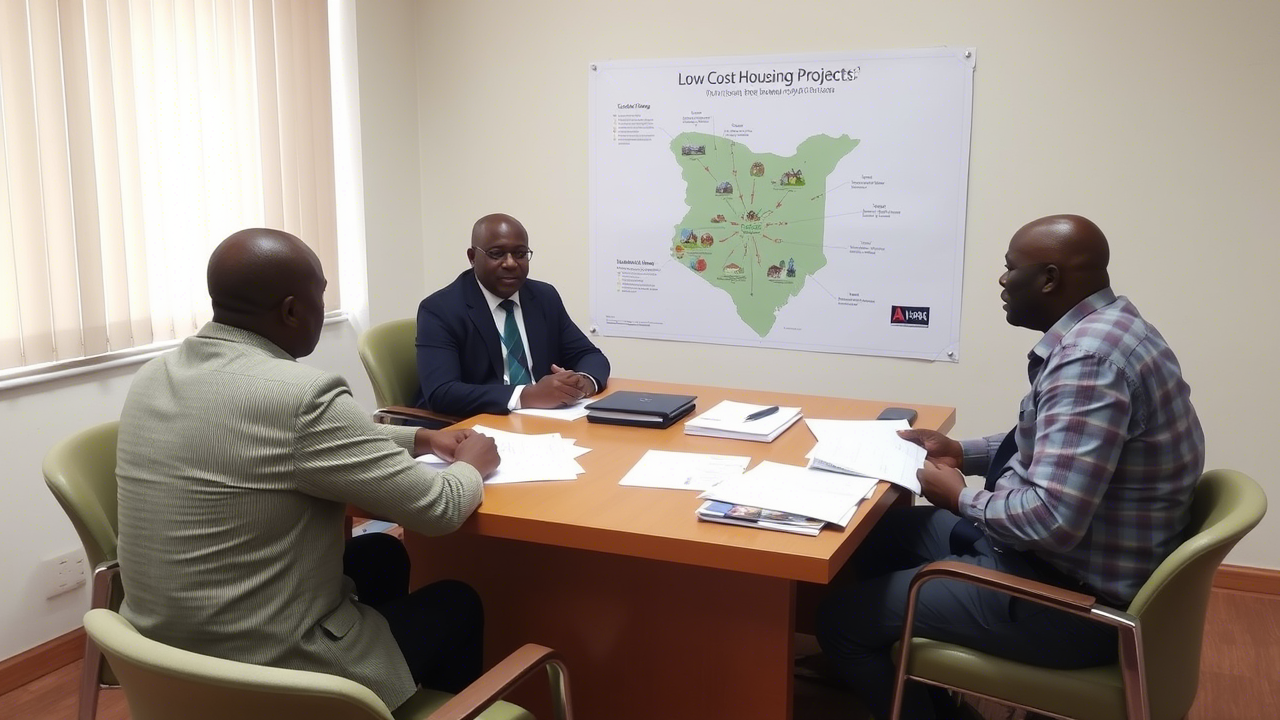Low-Cost Housing in Kenya
Introduction
Housing in Kenya is a critical issue as the country experiences rapid population growth and urbanization. The Kenyan government has set an ambitious goal to create 150,000 new houses annually to meet the increasing demand. However, the current state of housing, particularly in rural areas, is characterized by low quality and high costs. This situation necessitates innovative and cost-effective building methods to ensure that housing is accessible to a larger portion of the population. One such method is precast technology, which offers a potential solution for quick and affordable construction. This article explores the challenges and opportunities in housing in Kenya, focusing on the potential of precast technology to address these issues.

The Current State of Housing in Kenya
The demand for housing in Kenya is growing at an unprecedented rate due to the increasing population and urbanization. According to the latest statistics, the urban population in Kenya is projected to double by 2050, placing immense pressure on the existing housing infrastructure. The current housing situation is particularly dire in rural areas, where the quality of housing is significantly lower compared to urban centres. Many rural homes are constructed with rudimentary materials, lacking basic amenities such as proper sanitation and electricity. This disparity highlights the urgent need for affordable and high-quality housing solutions that can cater to the diverse needs of the population.
The Government’s Housing Initiative
In response to the housing crisis, the Kenyan government has launched an ambitious initiative to build 150,000 new houses annually. This initiative aims to address the housing shortage by providing affordable and quality homes to a larger segment of the population. The government’s focus on housing is part of a broader effort to improve living standards and reduce poverty. However, achieving this goal requires innovative and cost-effective building methods that can deliver high-quality housing at a large scale. The challenge lies in balancing affordability with quality, ensuring that the new housing units are not only accessible but also durable and safe.
The Role of Precast Technology
Precast technology offers a promising solution to the housing crisis in Kenya. This building method involves manufacturing concrete components off-site in a controlled environment and then assembling them on-site. The controlled manufacturing process ensures the production of high-quality concrete components, which can significantly improve the durability and longevity of housing units. Additionally, precast technology allows for faster construction times, reducing the overall project duration and costs. This efficiency is crucial in meeting the government’s goal of building a large number of houses annually.
Advantages of Precast Technology
One of the primary advantages of precast technology is its ability to deliver high-quality housing at a lower cost. The controlled manufacturing environment ensures that concrete components are produced with precision and consistency, reducing the risk of defects and errors. This quality control is particularly important in regions where traditional building methods may result in substandard housing. Moreover, precast technology allows for the use of advanced materials and techniques that can enhance the energy efficiency and sustainability of housing units. For example, precast components can be designed with built-in insulation, reducing the need for additional heating and cooling systems.
Cost Reduction and Quality Improvement
To fully realize the potential of precast technology, it is essential to investigate new techniques that can further reduce costs and improve quality. Research and development efforts are underway to explore innovative manufacturing processes, such as the use of automation and robotics in precasting. These advancements can significantly reduce labor costs and increase production efficiency. Additionally, the use of locally sourced materials can help lower transportation costs and support local economies. By combining these cost-saving measures with the inherent quality advantages of precast technology, it is possible to deliver affordable and high-quality housing solutions that meet the needs of the Kenyan population.
Conclusion
Housing in Kenya is a pressing issue that requires immediate and innovative solutions. The government’s initiative to build 150,000 new houses annually is a step in the right direction, but achieving this goal necessitates the adoption of cost-effective and high-quality building methods. Precast technology offers a promising solution, combining the advantages of controlled manufacturing with the efficiency of off-site production. By investing in research and development to further reduce costs and improve quality, precast technology can play a crucial role in addressing the housing crisis in Kenya. The future of housing in Kenya depends on the successful implementation of such innovative solutions, ensuring that every citizen has access to safe, affordable, and high-quality housing.
